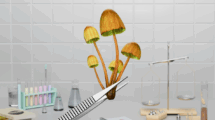Recent changes to the tenancy law have certainly put a whole new spin on the way landlords manage the risks associated with renting out residential properties.
As the rental industry comes to terms with the full effects of these changes, experienced landlords and top-notch property managers are busy developing
new best-practice models in order to continue growing their rent roll in this increasingly challenging market.
One such business practice evolving alongside the law changes is that of inspections. As landlords and property managers become increasingly burdened with
higher compliance standards and risks, a properly carried out inspection is become less and less negotiable.
So, ask yourself this, how much do you actually know about your property and the tenants living in it? If you find your answer unsettling, then it is time
to take a look at how your inspection strategy is failing you.
A good starting point? APIA members are invited to come along to the next Property Show-&-Tell session hosted by our good friend Katrina O’Connor of Barfoot and Thompson. Katrina will
be taking you through an actual rental and show you how the pros inspect. Before then, we’ve tapped Katrina to talk to us a bit about property inspection
– the 2019 way!
APIA: Having been a property manager for over 11 years, what would you say are your main objectives when you inspect a property?
KO: For an entry inspection it is to obtain a robust and agreed-to record of the condition of the property
at the start of the tenancy. This sets the basis for comparison during and at the end of the tenancy.
For a routine inspection during the lifetime of a tenancy, I am checking for compliance by the tenant against the expectations as set out by the RTA and
identify any required/proactive/
APIA: Do you prefer to inspect with your tenant present or inspect on your own?
KO: Whilst it is quicker to inspect without a tenant present, I prefer to inspect when
a tenant is there as it develops stronger relationships with the tenant. A tenant who respects and likes you is less likely to want to “let you down”
they are also more inclined to communicate when problems arise. It is also an opportunity for a tenant to raise any concerns or issues and have these
addressed or discussed in person.
APIA: Privacy has been a buzzword of late considering the recent guidelines issued by the Privacy Commissioner. When you inspect a property, how do you tread the line between respecting the tenant’s privacy and ensuring that you are doing right by the landlord by identifying as many early signs of issues as possible?
KO: Avoid taking photos within the property that would identify the tenants (family
photos for example). Opening the wardrobe to look for leaks is one thing, checking out the tenant’s fashion sense while in the wardrobe isn’t. If you
have provided a fully furnished property it is ok to open the fridge to check it is undamaged (rubber seal for example). But if it’s the tenant’s own
fridge please do not open it!
APIA: How have the recent tenancy law changes affected the way you inspect rental properties?
KO: Over the last 11 years the need for documentation and supporting evidence has increased
and this will continue to be the case.
Once upon a time, photos were taken with a camera and you would maybe have a roll of film per property OR perhaps just one photo for each room. These days,
an entry inspection should have many hundreds of photos. When you photographically document every single surface, you are building yourself a solid
evidentiary basis should you need to make a claim against a tenant later on or if the tenant is to make a claim against you. Good record-keeping should
also include written reports, user manuals, receipts for works undertaken etc.
APIA: What are some of the inspection failures you see layman landlords make time and time again?
KO: I don’t think it is a terribly good idea to use Tenancy Services’ template inspection
report and writing ‘all good’ in the comment sections even if both parties sign the report. What colour was the paint? Were there carpets or curtains?
APIA: What is one of the less-obvious-but-super-
KO: I always open the hot water cylinder cupboard when completing an inspection – there
are at least three things I am looking for. Come along to the upcoming Show & Tell session on 2nd November and I will tell you all about them!















Add Comment